It’s easy to take clean water for granted. I know that I do. But what does it mean not to have easy access to clean water? I explore that in this post 13 Children’s Books About Water Scarcity + Activities:
- water scarcity booklist
- water scarcity activity
- water supply STEM unit
- list of clean water nonprofits
Let’s learn about water and what that looks like here in the United States and in developing countries.
Water Scarcity Book List for Kids
The Water Princess by Susan
In an African village, a mother and daughter, Gie Gie, must walk miles to bring back water, starting before sunrise. The water, when they finally get it, is cloudy with dirt. With this water, they wash clothes, prepare food for cooking, and boil for drinking. After waiting all day, Gie Gie finally gets water to drink. This journey must be done every day until someday when clear, clean water will miraculously flow in their village. This is Princess Gie Gie’s dream! The back matter notes that nearly one billion people around the world don’t have access to clean water. African model Georgie Badiel is working to change this. Her foundation is listed below. [picture book, ages 4 and up]
Anna Carries Water by
Anna wants to carry water on her head like her siblings, but she’s the youngest and it spills. Every evening after school, the kids went to the spring for water and carried it back home. The water is used for cooking, drinking, washing dishes and faces, and brushing teeth. They go to the river to wash clothes and bathe. This story focuses on Anna learning to carry water and overcome her fear of the neighbor’s cows, but it is also useful to contrast to other areas where water is further away and the impact of that on the children. [picture book, ages 4 and up]
Hope Springs by Eric Walters, and illustrated by Eugenie Fernandes
There is a drought in Kenya and the people in Boniface’s village don’t want to share water with the orphans at his orphanage at the Little Spring. Luckily, a well is being dug for the orphanage but it’s slow going. Finally, the well is done and Boniface has an idea. Using the leftover tools, he proposes digging a well by the little spring, helping the very people who refused him water. Boniface lives at a Creation of Hope orphanage and this is his true story.
A Long Walk to Water by Linda Sue Park
In Southern Sudan, Linda Sue Park tells two stories of a boy, Salva, and girl, Nya, based on actual events. The boy’s story is set in 1985 where his village has been decimated from war and he must survive on his own, making a perilous journey to a refugee camp. He is a Lost Boy of Sudan.
Nya’s story is set in 2008. Her struggle for survival revolves around a daily struggle to find water, a journey that consumes her entire day. Both Salva and Nya are connected in both war and peace. Salva is Dinka, a tribe that Nya’s people fight with over access to the water. Many people in Nya’s village have died over that.
The long walk to obtain water is about to change for her village. Both Salva and Nya play a part in this, and the ending brings hope for a better future. [chapter book, ages 10 and up]
Nya’s Long Walk by Linda Sue Park, illustrated by Brian Pinkney
In this picture book companion to the bestseller A Long Walk to Water, a young South Sudanese girl goes on a journey that requires determination, persistence, and compassion. [picture book, ages 3 and up]
Thank you to Jennifer Miller on Twitter @RaisingThemRighteous for this addition:
We Are Water Protectors by Carole Lindstrom, illustrated by Michaela Goade
Water is a resource that we need to protect. Indigenous people have always been stewards of the earth, but most recently, they led movements to safeguard water from harm and corruption. [picture book, ages 4 and up]
The Water Walker by Joanne Robertson
Gichi miigwech, Nibi, for the life you give to every living thing on Earth. I love you. I respect you.
Nokomis Josephine Mandamin, an Ojibwe grandmother, decided to walk to raise awareness to protect Nibi (water) for future generations. She walked, with other activists, around all of the Great Lakes, wearing out eleven pairs of sneakers. [bilingual Ojibwe picture book, ages 4 and up]
Thirst by Varsha Bajaj
In the slums of Mumbai where 12-year-old Minni lives, no one has indoor plumbing. Water must be collected every day at public pumps, but some days, the lines take hours when the water barely flows. And, when the monsoons come late, the water runs out and people must buy water from the water tank truck. One night, Minni and her friends stumble on a secret. The water mafia is stealing water from the public pumps. Suddenly her world is upside down. Her brother has to flee to the countryside. Her mother is ill and must move away as well to convalesce. Even worse, Minni has to take over her mother’s job as a servant until her mother is able to resume it. At the luxurious home of her mother’s employer, water comes flowing out of the taps. Minni wants to pursue her education, and now she must juggle her examinations, her new job, and a new computer class. She dreams of a world where there is enough water for everyone, but she will need to decide if someone small and insignificant can take down someone who is rich and powerful.
It’s easy to take clean water for granted and, while this story might feel like a “Mad Max” dystopian novel, it’s realistic fiction set in modern-day Mumbai. Minni’s teacher tells Minni and her classmates that only 5% of Mumbai’s water allotment goes to their area, despite being nearly 40% of the population. Like all scarce commodities, water is unevenly distributed. [middle grade, ages 10 and up]
Water by Subhash Singh Vyam
Thank you my Twitter friend @Tamra_Snell for her great book suggestion!
Great unit and book recs! This book is also a good one to discuss who has access, who doesn’t, and why.
“Did we take more than our due?”
Weaving his tale around a Gond fable about water, artist Subash Vyam muses on the history of our relationship with this most primeval of elements. A migrant to the city, he recalls growing up in a village where water was always scarce and human ingenuity was welcomed. In contrast to the village, the needs of the city are monstrous and there is a great danger that we will run this resource completely dry. In the end, there is only one way forward: all communities need to make a pact with Nature in order to survive ― or in our mindless push to harness her powers, we might lose our own place in this universe. [picture book, ages 12 and up]
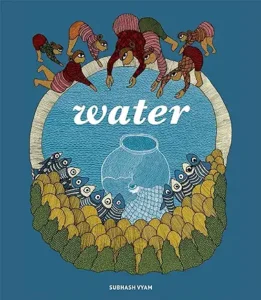
Dry by Neal and Jarrod Shusterman
Review from Nerdy Book Club:
“Dry has Shusterman’s signature “contemporary futuristic” setting and his no-frills style as it paints a horrifying yet believable picture of the potential for widespread drought and the devastation and havoc it could wreak…
It begins when the water stops.
The novel told in the alternating perspectives of Alyssa, Kelton, Jacqui, and Henry, is about four teenagers whose lives collide during the California “Tap Out,” in which the state’s supply of water that was being routed to them from the Colorado River, is shut off without notice. Neighborhoods devolve into warzones with Costco at the frontlines; Doomsday Preppers hunker down in their bunkers, gleefully muttering “We told you so,” and the clock starts to tick on not only human lives but their very humanity. The action abounds as each character must do what they can or are willing to do to survive. And whoever is left standing in the end will have to live with the choices they’ve made.
I think what sets this book apart is its potential to be a catalyst of change. When my heart stopped pounding and I climbed out of the internet rabbit hole that is Doomsday Prepping 101, I was left with the urge to do something. I want to know more and do better with my own resource consumption. I know I will be putting this book into the hands of my students with the hopes that it makes them feel the same.” [young adult, ages 12 and up]
Water Scarcity Activity for Kids
Bucket exercise teaches students about water scarcity
A class of Illinois high-school freshmen carried buckets filled with 10 pounds of canned goods back and forth across a football field to simulate what life is like in poor areas of Africa where people have to walk long distances in search of water. This lesson on resource allocation, part of the school’s Global Issues class, also was designed to help build empathy among students.
STEM Water Supply Unit
Water Supply for Kids: A Hands-On Science Unit
The Metropolitan Water Resource Authority came to my kids’ elementary school and taught them about our local water supply. I created a unit (Water Supply for Kids: A Hands-On Science Unit) about it for home or schools covering:
- The history of the reservoir where I live
- Waste Water
- How to measure the pH of water
- Free Printable eBook Dwayne the Storm Drain
- Water Supply App for Kids
- A list of relevant books for kids
Water Cycle Books for Kids
Be Thankful for Water: How Water Sustains Our Planet by Harriet Ziefert, illustrated by Brian Fitzgerald
This is a gentle environmental rhyming picture book that breaks out, in seven short chapters, all the ways water is important to us and our planet. [picture book, ages 4 and up]
Water is Water: A Book About the Water Cycle by Miranda Paul, illustrated by Jason Chin
The water cycle follows the different states of water from liquid to gas to solid. Its many forms include steam, fog, ice, snowflakes, precipitation, snow, and, as part of things like apples and humans! Miranda Paul takes the water cycle and makes it engaging and easy to understand for kids. Jason Chin’s beautiful illustrations make this a lush and adventurous reading experience. Endnotes include facts about water. For example, did you know that the total amount of water on Earth hasn’t changed in millions of years?! Prepare to be amazed and entertained in Water is Water. The water cycle has never been this fascinating. [nonfiction picture book, ages 6 and up]
Water’s Children: Celebrating the Resource that Unites Us All by
A Cool Drink of Water by Barbara Kerley
National Geographic photographs portray how people around the world collect and drink water. With very simple text, this is the perfect picture book to show a multicultural view of what it is like to get a drink of water. The photographs are detailed in the back matter both with location and how the water is procured. The final page is about water conservation. It’s easy to take fresh water for granted here in the United States. This book makes us realize how lucky we are! [picture book, ages 3 and up]
Clean Water Nonprofits
If kids are inspired to do more, here are some great organizations working to make clean water available in developing countries. I like how these non-profits show a range of ways to solve this problem including new technology, improving operations around the water system, to hands-on building projects like digging new wells.
Georgie Badiel Foundation focuses on providing access to clean water and sanitation to the people of Burkina Faso and developing solutions for the future.
Creation of Hope works to create a future for the orphans of the Mbooni Region in Kenya.
Water for Good works with communities in central Africa to establish sanitation best practices, improve agriculture, and empower people to create sustainable clean water access.
WATERisLIFE developed a water filtration product called The Straw which provides clean drinking water when immersed into a water source.
Charity: Water brings clean and safe drinking water to people in developing countries.
Three Avocados donate 100% of their profits to building water projects in Uganda.
Water.org, co-founded by Matt Damon and Gary White, provides access to safe water and sanitation in developing countries.
Partnering with the University of Venda in Thohoyandou in South Africa, PureMadi’s first project was a ceramic water filter that used local materials to effectively purify water. They built a sustainable filter factory that is locally run and produces the much-needed product. The next creative and life-saving endeavor on the docket is the MadiDrop, a simple ceramic water purification tablet that can disinfect water for up to six months by being placed in a container through which water is poured.
p.s. Related posts:
Multicultural Children’s Book Club: We Are Water Protectors
Water Supply System for Kids: A Science Unit for Home
Water! Blog Tour and GIVEAWAY!
Throwing Boiling Water in – 6 Degrees
To examine any book more closely at Amazon, please click on image of book.
As an Amazon Associate, I earn from qualifying purchases.
Follow PragmaticMom’s board Multicultural Books for Kids on Pinterest.
Follow PragmaticMom’s board Children’s Book Activities on Pinterest.
My books:
Amazon / Signed or Inscribed by Me
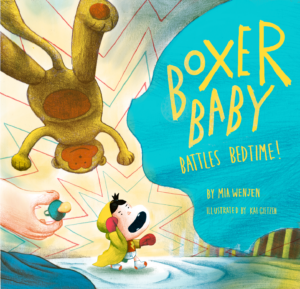 Amazon / Signed or Inscribed by Me
Amazon / Signed or Inscribed by Me
Food for the Future: Sustainable Farms Around the World
- Junior Library Guild Gold selection
- Selected as one of 100 Outstanding Picture Books of 2023 by dPICTUS and featured at the Bologna Children’s Book Fair
- Starred review from School Library Journal
- Chicago Library’s Best of the Best
- 2023 INDIES Book of the Year Awards Finalist
- Green Earth Book Award longlist
- Imagination Soup’s 35 Best Nonfiction Books of 2023 for Kids
Amazon / Barefoot Books / Signed or Inscribed by Me

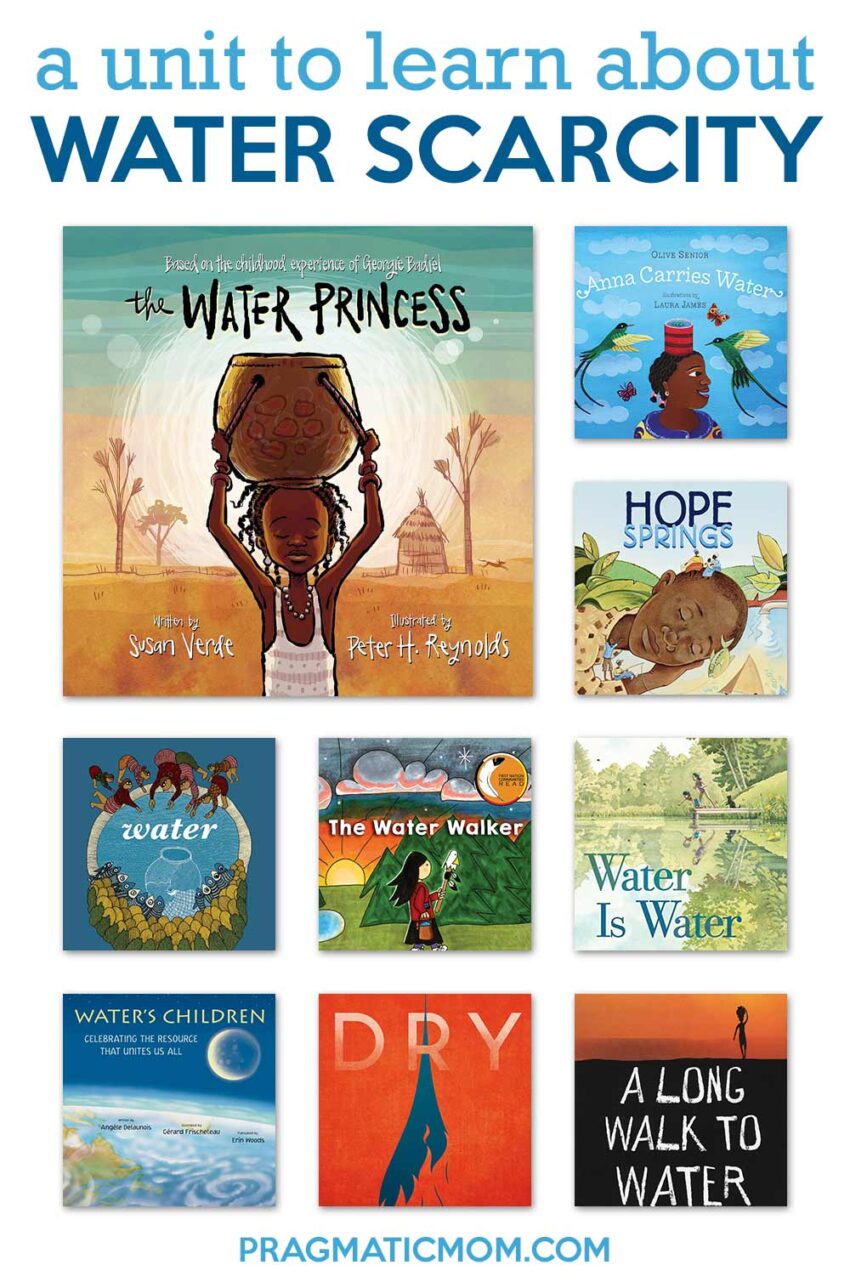
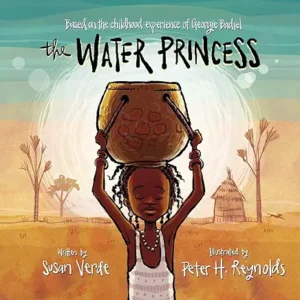
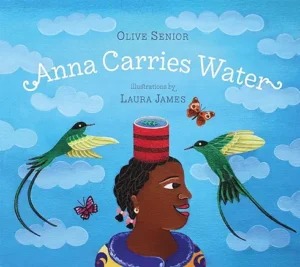
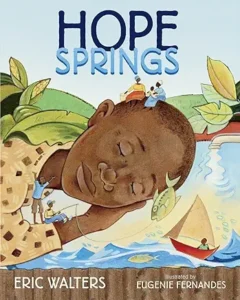
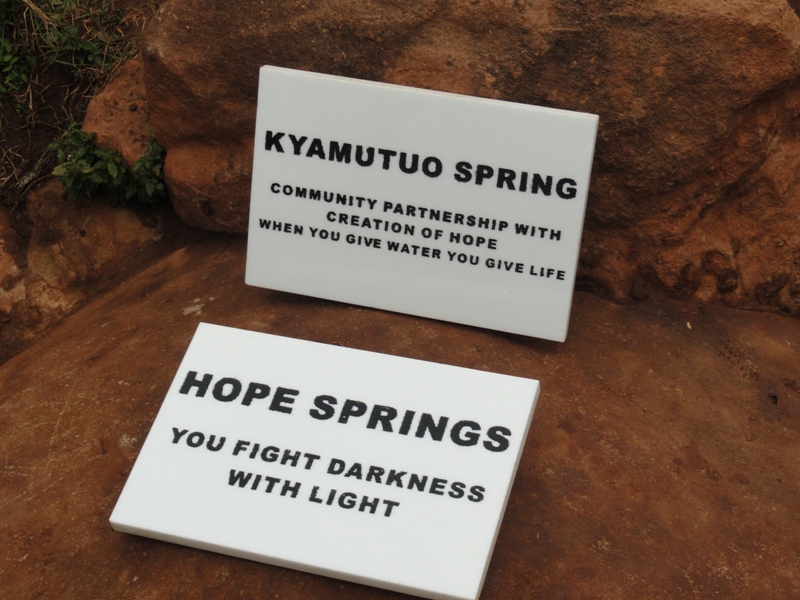
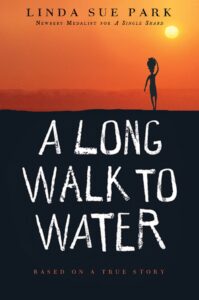
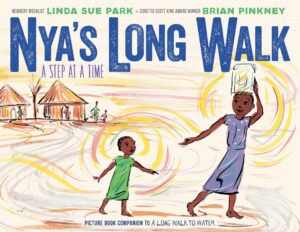
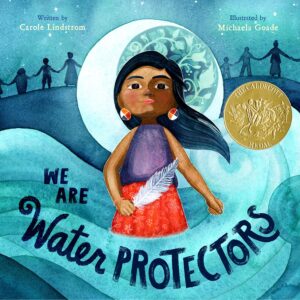
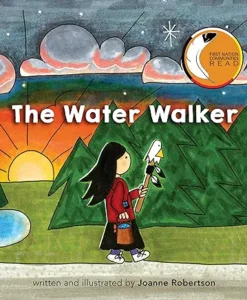
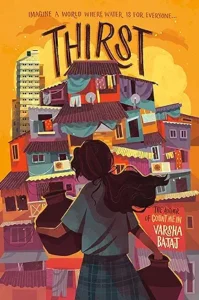

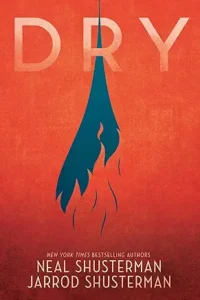
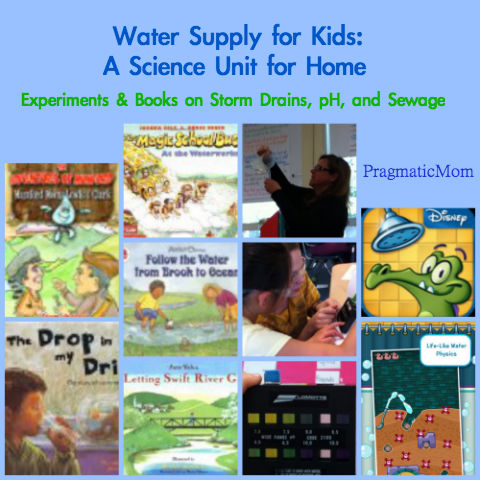
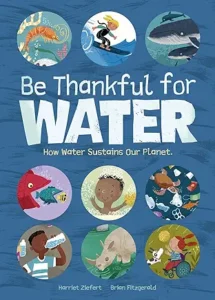
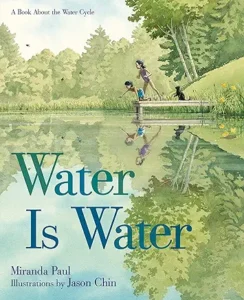
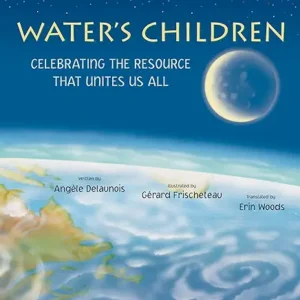
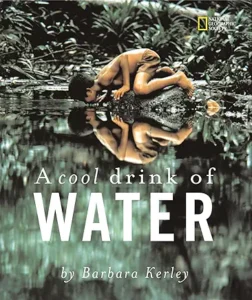
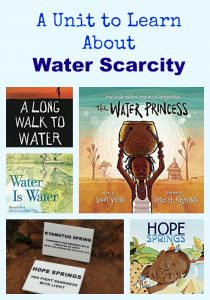

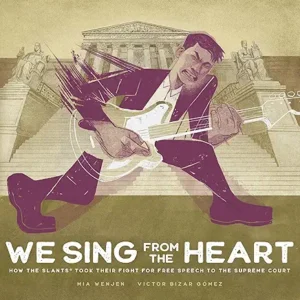
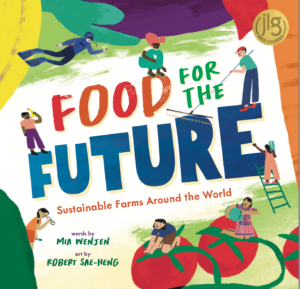
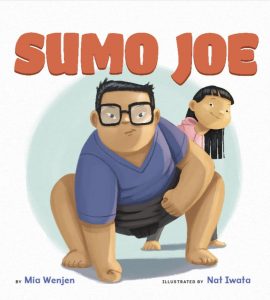
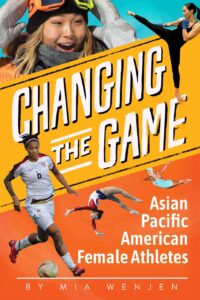
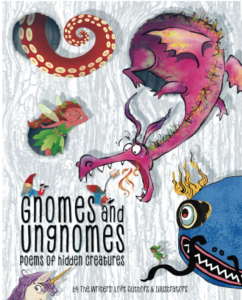

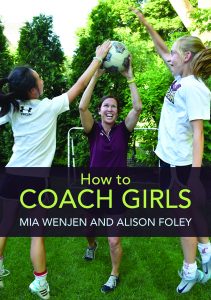

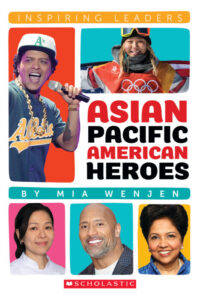

Such a fascinating and important topic.
Hi Patricia,
I’m glad that there are a range of books covering water scarcity. It’s easy to take this for granted in the United States. We are lucky we can turn on a tap and get fresh, drinkable water. Those books opened my eyes to what some families have to go through to get water. It’s an all-day event for some.
I love this, Mia!! Great titles, many of which I’m unfamiliar with, and such an important topic. In the US we take clean water, and water in general so much for granted, and it’s a precious and NOT an infinite resource. We need to save water, plant native shrubs and grasses that don’t require watering, not grass lawns! People on the west coast are a little more aware of this, but so much water is wasted. It drives me crazy when I see automatic sprinklers watering in the rain. And when we lived in San Diego, I remember seeing recycled water being used for watering shrubbery, and lots of houses with cacti and rock gardens which I LOVED!!
Thank you for sharing this!
Hi Maria,
I agree (speaking as someone with a lawn though!).
So happy to have discovered your site and such wonderful resources!